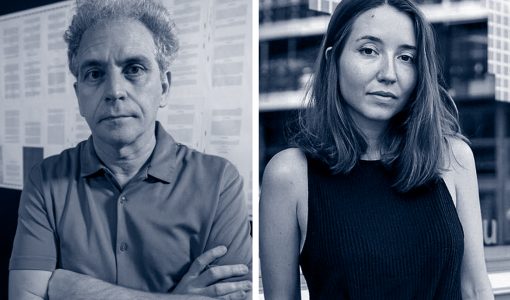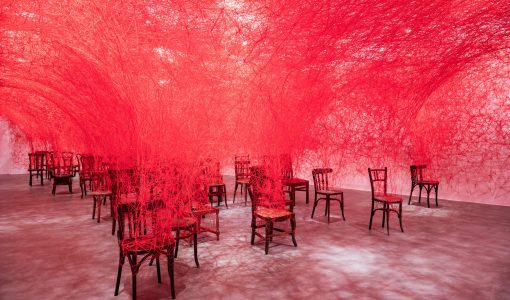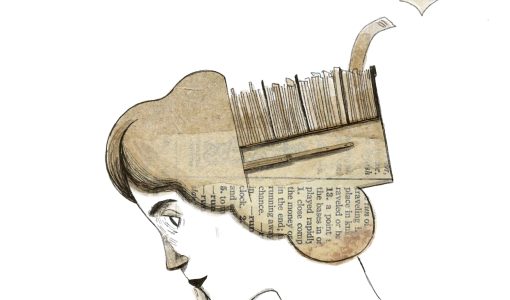
Andy Warhol: Film, Video and TV
Home
›
Exhibitions
›
Andy Warhol: Film, Video and TV
Andy Warhol (Philadelphia, 1929 – New York, 1987) did his early work in the world of fashion and advertising and took up painting (and soon afterwards, film-making) at a moment when Abstract Expressionism was at its height, with figures such as Jackson Pollock, Mark Rothko or Willem de Kooning.
Aware of the increasing importance of the consumer goods which had become widely known through the media, in the sixties Warhol began to develop an art with clearly popular roots (in opposition to the elitist, intellectual associations of Abstract Expressionism) based on icons taken from everyday life which he reproduced in series by means of silk-screen printing.
Although as a student of the Carnegie Institute he had already made a few forays into the cinema in the late forties, it was not until 1963 that Warhol began to make films seriously. His changing output paralleled the evolution of the cinema itself, from silent to sound, from the fixed camera to the zoom or pan, even to obtaining stroboscopic effects through editing strategies.
Warhol’s cinematic evolution can be summed up in various series of films: the early minimalist ones from 1963-64, such as Sleep, Kiss, Haircut, Blow Job, Eat, Empire and Henry Geldzahler, long, static films in which there was no technical intervention or processing; the first experimental narratives, such as Tarzan and Jane Regained… Sort Of (1963); the Screen Tests and other film portraits made between 1964 and 1966; the talking pictures with scripts made with Ronald Tavel in 1965 and 1966; the Edie Sedgwick films; the experiments with multiscreen projection, like Chelsea Girls (1966-67); the films about sexploitation (**** [Four Stars]); the films shot outdoors like Lonesome Cowboys, a gay parody of the Western, and San Diego Surf (1967-68) and, lastly, the series of films produced by Warhol, but directed by Paul Morrissey, starting with Flesh in 1968.
Andy Warhol’s contribution to the cinema can be expressed in terms of two tropes which characterise his output. First, the use of fixed camera to create static compositions with no narrative thread (though there are numerous exceptions which break up the single frame); second, the long take, often projected at silent film speed, which constitutes an unceasing, searching gaze which is very close to the gaze of the voyeur. At times, however, Warhol used different ways of editing which deconstruct that take, such as the stroboscopic cut, which turned out to be a kind of visual and auditory noise that interrupted a sequence of events, or ellipse. From the beginning, the use of those cinematic resources, which tend to be accident prone, involved setting bounds to the medium, which Warhol used to set a personal stamp on his work.
In 1965 the magazine Tape Recording gave Warhol a video camera and a Norelco tape recorder, both state of the art, to experiment for a month. In exchange, he had to describe the experiment with the new medium in an exclusive interview. The result of that experiment was the Factory Diaries, which reflect the everyday activities at the Factory. Five years later, at a time when he had distanced himself from the cinema, Warhol acquired a portable video camera (a Sony Portapack) with which he filmed a new series of Factory Diaries (1971-76), which included a number of journeys and interviews. As his interest focused increasingly on television, the diaries became less frequent. In the mid-seventies, Warhol and Vincent Fremont developed various ideas and pilot programmes for narrative series (Vivian’s Girls, Phoney and Fight), and later produced colour television programmes, directed by Don Munroe, about the world of fashion (Fashion, 1979-80). That experiment led him to produce a new entertainment programme which modelled itself on his magazine Interview (Andy Warhol’s TV); eighteen episodes were made between 1980 and 1982. Simultaneously, in 1981 he made three one-minute segments for a popular television programme, Saturday Night Live, in which he reflected on issues such as death, fashion or the gay lifestyle. Those pieces are probably Warhol’s finest contribution to the medium.
Television enabled Warhol to construct himself an image as a media personality which made him a celebrity of contemporary culture. His programmes led him back into the world of fashion and advertising and his popularity was confirmed by a guest star appearance on the programme The Love Boat in 1985. The same year, Warhol started work on his last programme, Andy Warhol’s Fifteen Minutes, for the national network MTV. Each fifteen-minute episode was a mixture of pop music and culture. The programme ended in 1987 with the artist’s death. The last episode was broadcast at his funeral.
The exhibition presented by the Fundació Antoni Tàpies was divided into three parts: a retrospective of Andy Warhol’s films in the auditorium at the Fundació; a show made up of the artist’s videos, advertising spots and television programmes, with a series of photographs taken by some of his associates (Christopher Makos, Billy Name, Stephen Shore), the installation Outer and Inner Space (1965), which combines experimental technology and multiscreen structure with the rigors of the traditional portrait, and the recreation of an atmosphere inspired by the Factory which included film experiments which were not intended to be shown in cinemas; and a special publication consisting of critical essays and copious graphic material.
Dates
11.02.2000 – 26.03.2000
Curator
Juan Guardiola.
Artist
Andy Warhol.
Touring
11/2/2000 – 26/3/2000, Fundació Antoni Tàpies, Barcelona.
24/2/2000 – 16/4/2000, Área de Cultura, Palacio de los Condes de Gabia, Diputación Provincial de Granada.
7/4/2000 – 21/5/2000, Fundación Picasso-Museo Casa Natal, Ayuntamiento de Málaga, Málaga.














